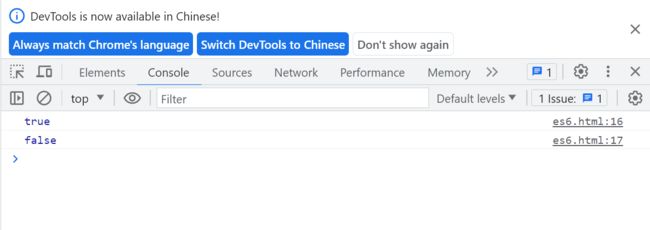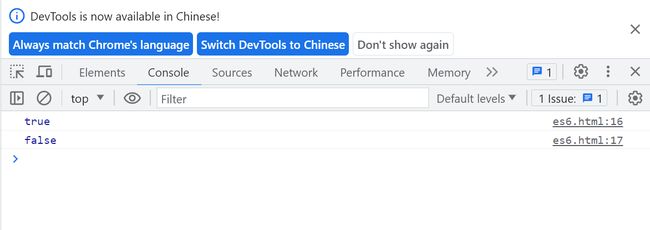JavaScript笔记——快速了解 ES6 新增字符串方法,开箱即用(含案例)
文章目录
- 前言
- includes() 方法
- startsWith() 方法
- endsWith() 方法
- repeat() 方法
- padStart() 方法
- padEnd() 方法
- trim() 方法
- trimStart() 或 trimLeft() 方法
- trimEnd() 或 trimRight() 方法
- replaceAll() 方法
- slice() 方法
- substring() 方法
- split() 方法
- charAt() 方法
- charCodeAt() 方法
- 最后
前言
JavaScript 中文本表示文档的类型是 String,即字符串。当你使用 JavaScript 编程时,经常会处理字符串。ES6(ECMAScript 2015) 引入了许多新的字符串方法,使得字符串处理更加方便和强大。在本篇博客中,我们将介绍一些 ES6 新增的字符串方法,并提供示例代码来说明它们的用法。
includes() 方法
includes(searchString, position) 方法用于判断一个字符串是否包含另一个字符串,返回布尔值。searchString 为要搜索的字符串,position 可选,表示开始搜索的位置。
const str = 'Hello, world!';
console.log(str.includes('world')); // true
console.log(str.includes('foo')); // false
startsWith() 方法
startsWith(searchString, position) 方法用于判断一个字符串是否以另一个字符串开头,返回布尔值。
const str = 'Hello, world!';
console.log(str.startsWith('Hello')); // true
console.log(str.startsWith('hello')); // false
endsWith() 方法
跟 startsWith() 相反,endsWith(searchString, length) 方法用于判断一个字符串是否以另一个字符串结尾,返回布尔值。
const str = 'Hello, world!';
console.log(str.endsWith('world!')); // true
console.log(str.endsWith('world?')); // false
repeat() 方法
repeat(count) 方法用于重复一个字符串若干次,返回新字符串。
const str = '黛琳ghz';
console.log(str.repeat(3));
padStart() 方法
padStart(targetLength, padString) 方法用于将一个字符串填充到指定的长度,从字符串的开头开始填充,返回新字符串。
const str = '123';
console.log(str.padStart(7, '0')); // '0000123'
padEnd() 方法
与 padStart() 相反,padEnd(targetLength, padString) 方法用于将一个字符串填充到指定的长度,从字符串的结尾开始填充,返回新字符串。
const str = '123';
console.log(str.padEnd(7, '0')); // '1230000'
trim() 方法
trim() 方法用于去除一个字符串两端的空格,返回新字符串。
const str = ' Hello, world! ';
console.log(str);
console.log(str.trim()); // 'Hello, world!'
trimStart() 或 trimLeft() 方法
trimStart() 或 trimLeft() 方法用于去除一个字符串开头的空格,返回新字符串。
const str = ' Hello, world! ';
console.log(str);
console.log(str.trimStart()); // 'Hello, world! '
console.log(str.trimLeft()); // 'Hello, world! '
trimEnd() 或 trimRight() 方法
trimEnd() 或 trimRight() 方法用于去除一个字符串结尾的空格,返回新字符串。
const str = ' Hello, world! ';
console.log(str);
console.log(str.trimEnd()); // 'Hello, world! '
console.log(str.trimRight()); // 'Hello, world! '
replaceAll() 方法
replaceAll(searchValue, replaceValue) 方法用于将所有匹配的字符串替换为新的字符串,返回新字符串。
const str = 'Hello, world! Hello, world!';
console.log(str.replaceAll('Hello', 'Hi')); // 'Hi, world! Hi, world!'
slice() 方法
slice(start, end) 方法用于提取字符串中指定起始位置到结束位置之间的部分,返回新字符串。
const str = 'Hello, world!';
console.log(str.slice(7, 12)); // 'world'
substring() 方法
substring(start, end) 方法与 slice() 方法类似,用于提取字符串中指定起始位置到结束位置之间的部分,返回新字符串。
const str = 'Hello, world!';
console.log(str.substring(7, 12)); // 'world'
split() 方法
split(separator, limit) 方法用于将一个字符串分割成数组,根据指定的分隔符进行分割,并可指定返回的数组长度限制。
const str = 'apple,banana,orange';
console.log(str.split(',')); // ['apple', 'banana', 'orange']
console.log(str.split(',', 2)); // ['apple', 'banana']
charAt() 方法
charAt(index) 方法用于获取指定索引位置的字符。
const str = 'Hello, world!';
console.log(str.charAt(7)); // 'w'
charCodeAt() 方法
charCodeAt(index) 方法用于获取指定索引位置的字符的 Unicode 编码。
const str = 'Hello, world!';
console.log(str.charAt(7)); // 'w'
console.log(str.charCodeAt(7)); // 119
最后
到此文章就是文章的全部内容了,这些是 ES6 新增的一些常用字符串方法,它们可以帮助你更轻松地处理和操作字符串。使用这些方法,你可以更高效地编写 JavaScript 代码。希望这篇博客对你有所帮助!
![]()














